Watercolor Terms and Vocabulary (All the Jargon with Illustrations!)
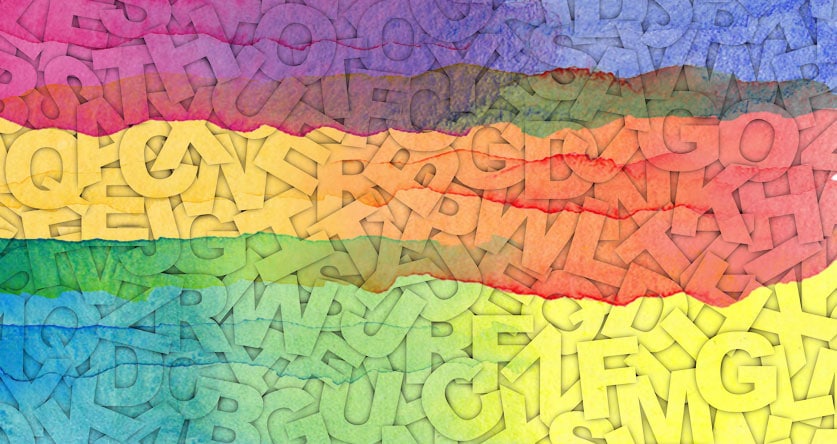
The wonderful world of watercolor is full of exotic vocabulary. Artists use so much terminology that it’s easy to get lost because of the specialized lingo!
For example, do you know what “convenience colors” are? What about a “back-run” or a “bead”? And what exactly is “archival paper” anyway?
Are you lost yet?
I’m not surprised!
So to help your aching brain understand all these fancy words, I’ve put together this glossary of watercolor terms and vocab.
And there are some pictures too!
What more could you ask?!
My Illustrated List of Watercolor Painting Terms and Vocabulary
The following is an alphabetical list of the most common watercolor terms. I guess technically speaking, you can call this a glossary.
But sometimes words are not enough!
So wherever possible, I’ve included a quick illustration to help you understand the meaning of these tricky technical terms.
All this jargon might seem a bit boring. Still, recognizing this vocabulary can be extremely useful when you’re following a tutorial or watercolor lesson.
Honest! It will come in handy 🙂
And as a bonus, you’ll find a downloadable worksheet of terms you can keep and refer to whenever you need it.
BTW, if you don’t find what you’re looking for in this list, leave a comment below. I’ll do my best to answer. And maybe add it to the list!
Archival
The term archival is used to describe watercolor paper, which is acid-free and has a
neutral pH. This characteristic means that watercolor paint will not fade over time, and
your paintings will be around for future generations to admire!
Back runs
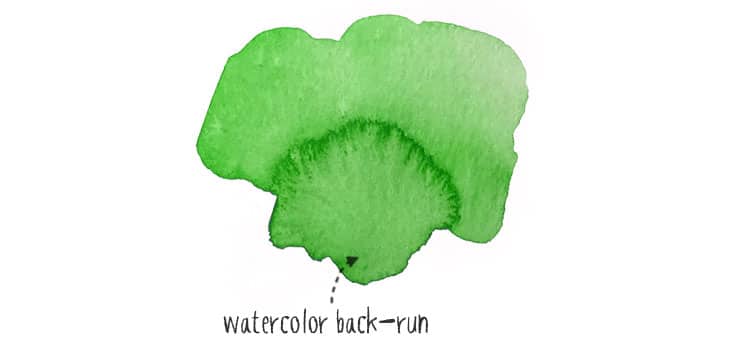
A back run produces a spidery “cauliflower-like” texture and occurs when a wet brush
mark “runs back” into a settling wash of color.
A back run is often considered an error because it shows a lack of control over the
paint, but when you know how back runs happen, they can also be produced on
purpose as a way to add texture and interest to a painting.
Bead

A bead is formed when you paint a wet shape, and excess moisture collects in a part of
that shape. This often happens at the end of a wet brush stroke. The brush usually distributes the paint evenly while you paint, but at the end of the stroke, an extra blob of paint can remain on the surface. Beads need to be controlled because the surplus moisture can result in a back run (see above). You can use blotting (see below) to remove any beads of excess moisture.
Beads are also desirable when you want to paint a large uniform surface. For example, when painting a flat wash, you need to keep the surface damp and “keep the bead flowing” before the paint dries on the paper.
Blooms

Blooms produce a similar textured appearance to back runs. They happen when an
area of paint is much wetter than the surrounding drying painted surface. The wetter paint flows into the drying painted surface, resulting in a spidery texture.
Some people also wall these “blossoms” or “cauliflowers.”
Blotting
Blotting is a term that has two applications in watercolor painting. You can either “blot” your brush using a cloth or paper towel to control the moisture level on your brush
head. Or you can “blot” a damp watercolor wash using a rinsed and dried brush tip.
Blotting color from the paper’s surface like this is also referred to as “lifting.”
Charging-in
Charging-in is a wet-on-wet technique where you mix colors directly on the paper. It’s done by loading your brush with color and adding a brush stroke or dabbing your brush into a damp paper surface.
Composition
Composition refers to the arrangement of visual elements in a painting. Composition can be used to enhance a painting. Good composition can help give a feeling of balance and unity to your work. Composition can also help set up a rhythm in a work of art, and you can use contrasting colors to help create focal points and draw the eye to a subject.
Convenience Color

A convenience color is a watercolor paint that includes two or more pigments in the ingredients. For example, most green colors are convenience colors because they can only be created by mixing a few pigments together. Brands often produce paint colors like this because they are more “convenient” and save time if you use a particular color often.
Cold press

This is a characteristic of watercolor paper.
During manufacturing, the paper pulp gets squeezed through a set of felt-covered rollers at low temperatures (hence the term cold press). The felt gives the paper a slight texture.
Hot press paper is run through smooth, heated rollers (hence the term hot press). This results in a smoother paper finish.
Rough paper is treated similarly to cold press, but the felt has a coarse texture.
(See also Hot press & Rough)
Colors
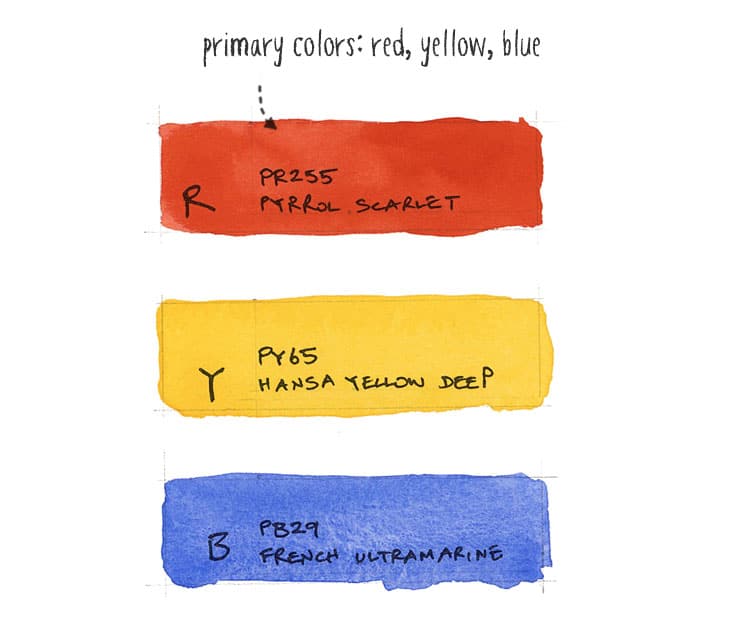
In art, colors are usually referred to as primary, secondary, and tertiary.
Primary colors include yellow, red, and blue.
Secondary colors are mixed using primary colors and include green, purple, and orange.
Tertiary colors are produced by mixing primaries and secondaries together.
Color Temperature
In art, colors are considered warm and others cool. This association stems from specific psychological triggers. For example, we think of the sun as producing warm colors, and shade produces cool colors.
Color temperature is a way to describe the color bias of any particular color. Paints themselves have a color bias. They can be more “cool” or more “warm,” depending on the pigments used. This is because “pure” colored pigments (without a color bias) don’t exist.
Color Harmony
The idea of color harmony is related to color theory, which tells us that certain color
combinations produce more balanced and “harmonious” results. Using color harmony
and selecting a limited range of color combinations can help enhance a piece of
Artwork.
Color wheel
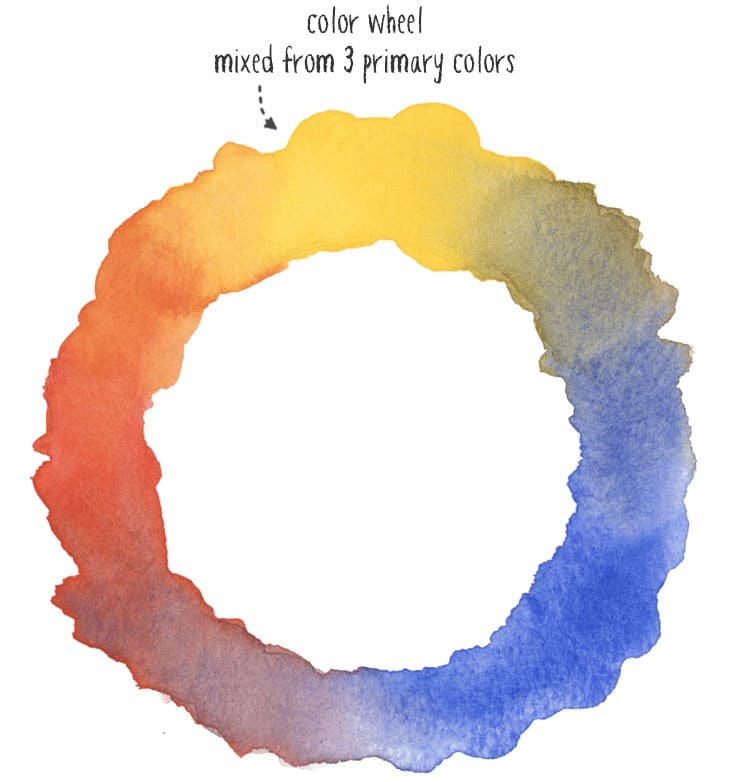
A color wheel is a tool that helps us understand color relationships. It can also be used as a guide for color mixing.
Most color wheels start with the three primary colors and show the mixing results when these paints are combined to produce secondary and tertiary colors.
Deckle Edge
High-quality cotton watercolor paper often has a “deckle edge.” This is an irregular scraggy-looking edge that appears like the sides of the paper have been torn or roughed up.
This is a consequence of the handmade paper-making process. You usually can tell if it’s handmade paper because it has a deckle edge on all the sides.
However, be careful because some paper makers add deckle edges to machine-made paper. In this case, it’s called a faux deckle edge.
Dry brush
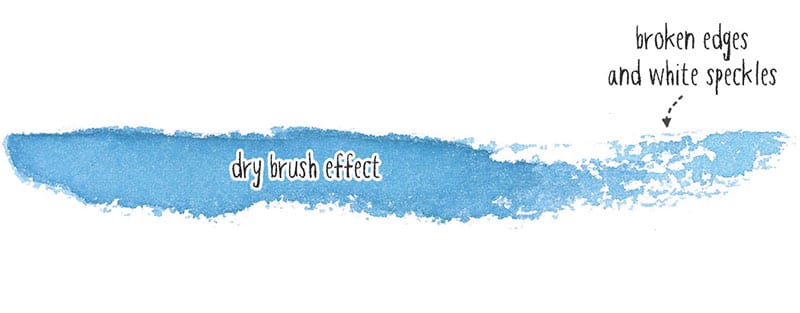
The term dry brush refers to a brush technique where you paint with a very dry brush head. This kind of brushmark looks fragmented on textured watercolor paper, creating broken edges and gaps where the white paper shows through.
Depth
In art, depth refers to the feeling of three-dimensional space that a painting imparts.
Depth is also related to the values and contrast you use in a painting. In general, the wider the range of values you use, the greater the sense of depth of the painting.
Flat wash
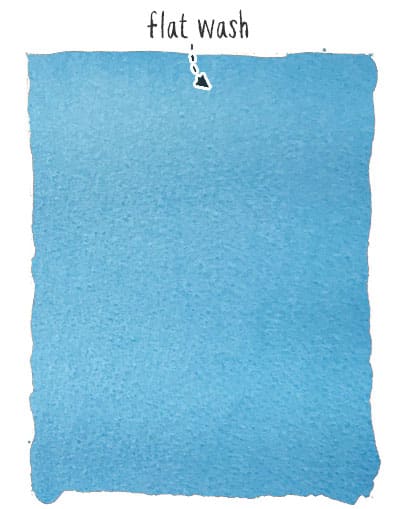
A flat wash is one of the three generic types of wash in watercolor painting (see also graded wash and variegated wash). You lay down a “wash” of color when you paint any kind of shape on paper.
A flat wash has a uniform color and tone. It doesn’t vary and has a smooth appearance across the whole painted surface.
Read more about wash techniques here…
Glazing
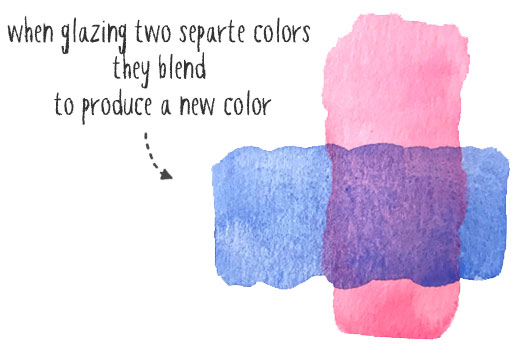
Glazing in watercolor painting is another word for layering paint. A glazing technique is when you paint a shape, let it dry, then paint a new shape over the top of the previous color. Because watercolor paint is transparent, any new brushmark allows the underlying colors previously painted to show through. Combining the two layers of color produces a new appearance with a modified color and “value.”
Graded wash

A graded wash (also known as a graduated wash ) changes in tone from dark to light across the surface of the wash. The transition in tone is gradual and smooth.
Granulation
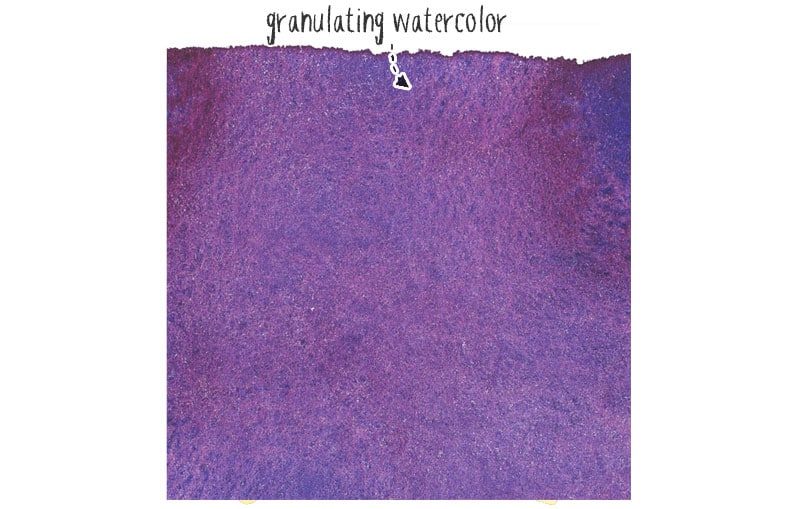
Granularity is another characteristic that varies from pigment to pigment.
Granulation is a grainy, mottled appearance that some watercolor paints have when dry. Granulating paints are an excellent way to produce beautiful textures when painting.
Gum arabic
The essential ingredients of any paint include colored pigments plus a binder. The binder used in watercolor paints is gum arabic. Gum arabic is water-soluble and completely transparent, and it’s the qualities of gum arabic that help provides many of the unique characteristics of watercolor paints.
Hot Press
This version of watercolor paper has a smooth finish. See also “cold press” for more details.
Hue
The term “hue” applies to colors. Although, I have to admit I tend to use the words “color” and “hue” interchangeably.
Strictly speaking, a hue usually refers to a color’s most vivid, colorful version. So, for example, a pure red color would be a “red hue.” But suppose you change the appearance of the color by making it grayer (lowering the saturation) or by making it look lighter (diluting paint with more water to make a weak mixture). In that case, the result is no longer a “hue.”
Layering
Layering is another term for “glazing” (and probably easier to understand!)
Lifting

A lifting technique can be used to remove color that has been applied to the paper surface. This is usually done using a rinsed and blotted brush, but you can use anything which will absorb paint from the surface of the paper, such as a paper towel or a sponge. Lifting lightens the tonal value of the affected area. Lifting tends to work better when a colored wash is still damp.
Masking
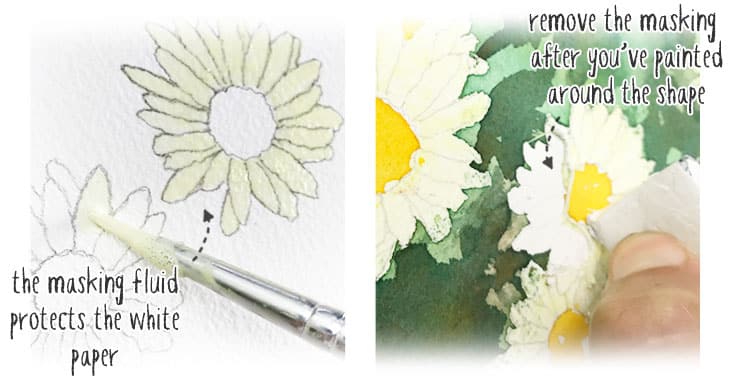
Masking is a technique that allows you to protect the paper surface while you paint over the top. It helps preserve the white or lighter parts of a painting while you apply a darker wash.
This liquid latex product is a very handy device for watercolor artists.
Pans
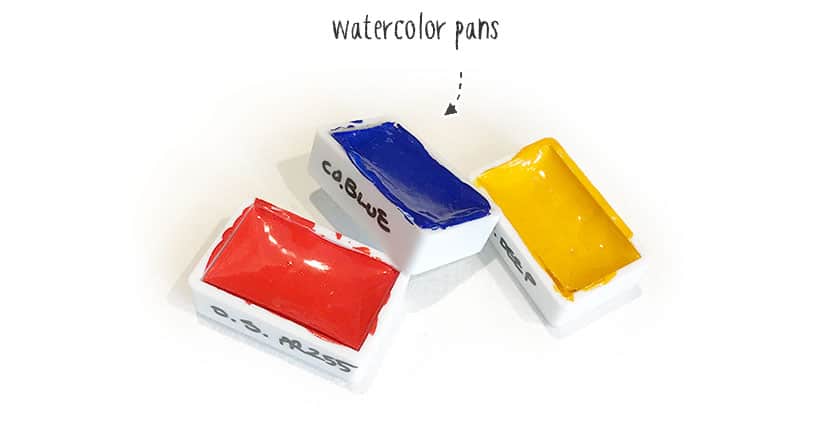
Pans are small (usually plastic) tubs that contain dried watercolor paint. You add a few drops of water to re-activate the contents before painting. Artists typically store these in a palette…
Palette

The word “palette” can mean a couple of things in watercolor painting.
First, this refers to the mixing palette you use to combine paint and water to produce a desired color.
You can also buy ready-made boxes containing a selection of paints or an empty container that you can fill with your own color preferences. These are also called “watercolor palettes.”
Occasionally some artists also use this word to refer to a color palette. In this case, they are talking about a range of paint colors. This might be the variety of colors they prefer to use while painting or a smaller “color palette” used for a particular painting.
Pigments
Pigments are one of the fundamental ingredients in watercolor paint. Pigments produce the color appearance of the paint. They are often made from minerals or other natural substances like plants and occasionally use synthetic products. Pigments are labeled using a Color Index Name. These pigment numbers tell you exactly which pigment was used in the ingredients. For example, PB28 is traditionally used for Cobalt Blue. The “PB” means “pigment, blue,” and “28” means that it’s the 28th blue pigment listing in the color index.
Rough (paper)
This term refers to one of the three watercolor paper textures (see cold-press and hot-press for comparison). Rough paper has the most pronounced texture. The bumpy coarse texture can produce interesting results. Still, it can also be challenging to work with (painting details, for example, is very tricky on rough paper).
Staining
Staining refers to a paint’s ability to adhere to the paper. For example, some paints will stick to the paper, even if you try to scrub them off, whereas others can be lifted easily.
Staining is a characteristic of the pigments used in the paint. Each pigment has its own specific staining properties.
Transparency
Watercolor is generally considered a transparent medium. But each individual paint has slightly different levels of transparency. This is because each pigment is unique, and certain pigments result in more transparency than others.
Transparent watercolors are often the most preferred type of paint. This is because they are known to produce vivid, brilliant hues and are the best for glazing techniques.
Value (Tone)
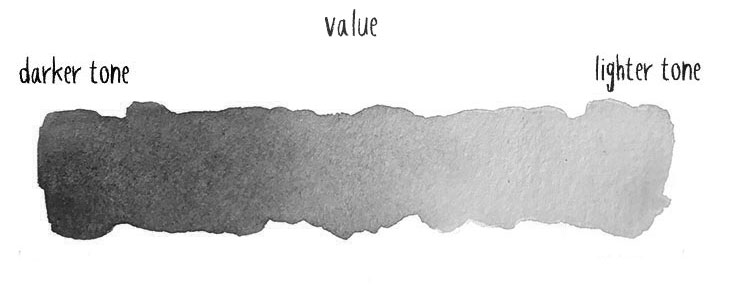
Value (also referred to as tone) is the lightness or darkness of a color. For example, white is a “light value,” and black is a “dark value.” Every color you mix has a “value,” and the way you represent values in your paintings greatly contributes to the realism of a finished painting.
Variegated Wash

A variegated wash has a smooth and progressive shift in color and is painted using two or more different hues.
Wet-on-wet
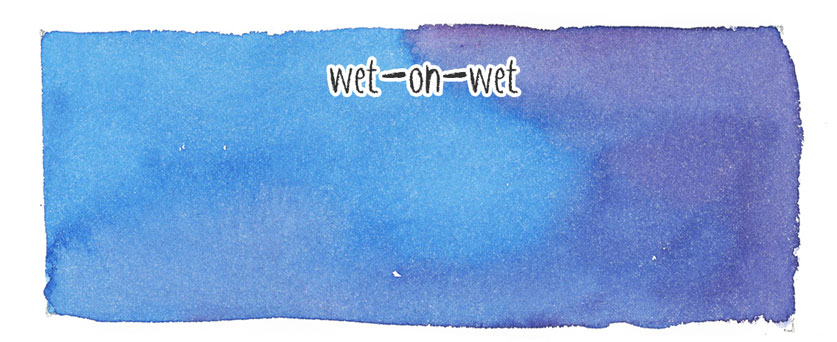
A wet-on-wet technique simply means wet paint applied to a wet surface.
This method produces blurred edges and soft shapes and is a highly appreciated characteristic of watercolor painting.
Wet-on-dry

Yep… You guessed. Wet-on-dry means painting with a wet brush on a dry surface.
A wet-on-dry approach allows you to paint sharp edges, so this method is perfect for painting details.
I use a lot of these terms throughout my Watercolor Masterclass. In the videos, I use this vocabulary alongside real-life demonstrations. So don’t worry… You will become familiar with these ideas pretty quickly!
Watercolor Terms Worksheet
You can download the worksheet for these watercolor terms in the form of a handy PDF guide below:

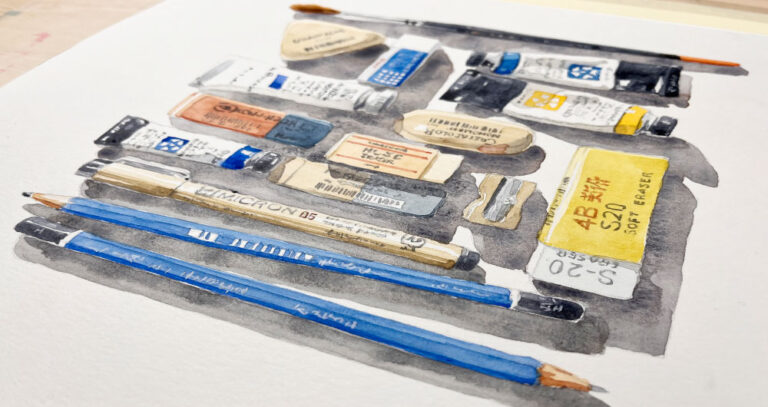
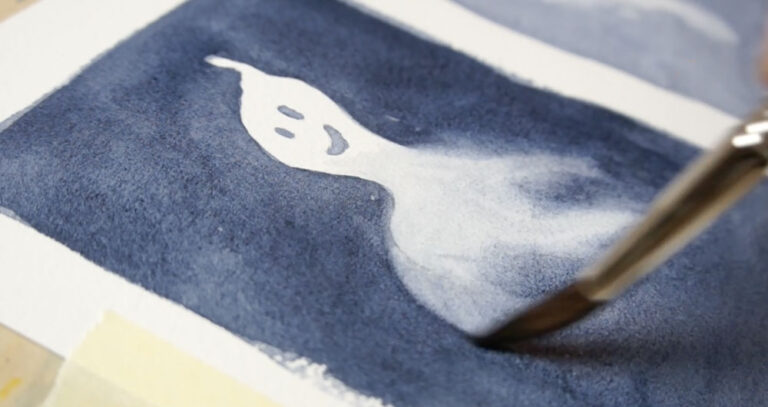
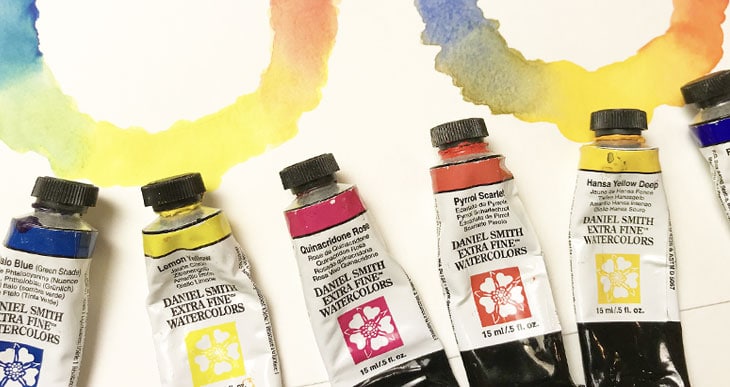


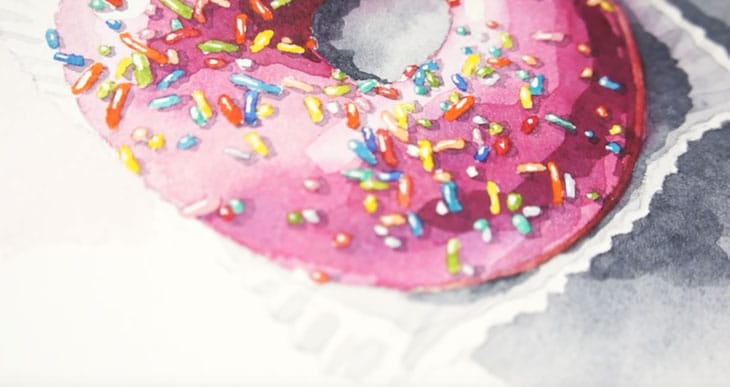
Thank you Anthony,very useful download,clear explanations and examples.I always follow your articles and learn a lot. Thanks.
Thanks Carolina !
Thank you for all you super helpful ideas and tutorials!
Happy to help Pauline 🙂